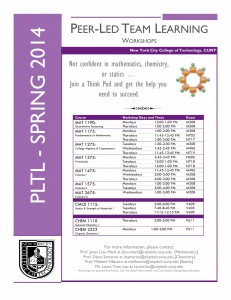Topics:
• Identifying the properties of logarithms that are being used: see the handout for their names
On Test 3 you will be asked to identify the property of logs you are using at each step. Please try to use only one property at a time.
• Solving logarithmic equations: see Example 14.5(e-h): we discussed (e) and (g)
To solve a logarithmic equation, first (if necessary) rewrite each of the sides of the equation as a single logarithm to the same base.
Then use Observation 14.4: if the logarithms are equal, then their inputs (also called the arguments) must be equal.
Then solve the resulting simpler equation.
Finally, check all the answers you got solving the simple equation to see whether or not they are solutions of the original logarithmic equation (before you made any changes to it). Remember when checking, do not move any term or number across the equals sign: this can invalidate your check. Just simplify each side separately to see if they are equal.
Then state your solution or solutions to the original equation: or state that there are no solutions, if that is what happened.
• Application: Exponential growth and exponential decay:
see Examples 15.1 for general procedures for finding the form of the function, and 15.2, 15.3 for applications
For the application to exponential growth or decay, we are using functions of the form
with .
[Please be aware that there is an alternate way to analyze these where the base is always taken to be , so the function will have the form
. We do not use that form in this course! Please only use the form given above or the formula which we will use next time (when the rate of growth is given).]
Homework:
• Review all of the examples discussed in class, including the homework problems where we identified the properties of logarithms.
• Do the assigned parts of Exercises 14.4, 15.1, 15.2, and 15.3
• Do the WeBWorK: due by Sunday 11 PM. Start early!
• No Warm-Up this time
• Don’t forget that Test 3 is scheduled for the first 50 minutes or so of class on Wednesday 9 April. There will be a separate post about that. Please use Piazza to discuss the problems on the Review Self-Tests.




